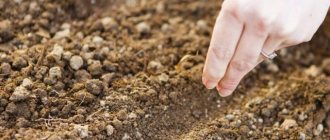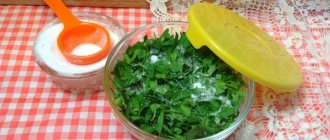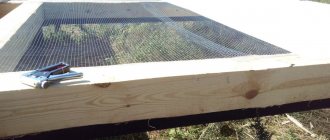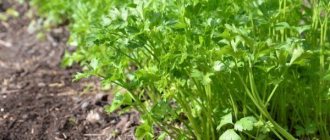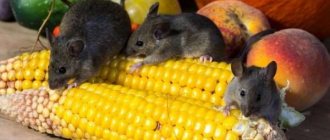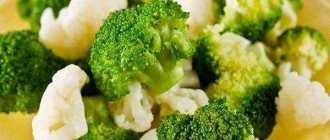Cauliflower is a seasonal vegetable that contains many beneficial substances. Freezing will help you have this product on your table all year round.
But for this you need to know how to freeze cauliflower for the winter (raw, boiled, together with broccoli) correctly, how and how much to store in the freezer, whether it can be defrosted and re-frozen.
Can it be stored in the freezer?
Cauliflower is a rather demanding vegetable to store. And freezing should also be carried out according to the rules, taking into account the further use of the vegetable.
The first step to obtaining a quality product after defrosting is to choose the right heads . The green leaves around the head of cabbage should be fresh and tightly adjacent.
The inflorescences themselves are healthy, dense, without wilted areas or darkening. Black spots are associated with the appearance of a fungus. The areas affected by it are not suitable for food, and are not suitable for winter preparations, including freezing.
Cauliflower can be frozen in various ways: fresh, boiled, cut into florets, whole, etc. In all cases, it will retain most of the nutrients.
It is important that the following conditions are met:
- freezing should occur fairly quickly;
- repeated defrosting and re-freezing are prohibited;
- It is advisable to know in advance how the cabbage will be used in the future (cooking soups, stewing vegetable stews, etc.);
- the product must be fresh and of high quality from the very beginning.
If it is especially important to preserve the aroma and taste of a vegetable, it should be frozen after preliminary boiling.
When you freeze raw cabbage, the beneficial substances in it will remain, but the taste may change, and the consistency will not be as dense. The best option for preparing for freezing is to separate them into inflorescences with a diameter of about 30 mm.
You will find all the most interesting and useful information about ways to store cauliflower here.
Why blanch food?
- Thanks to blanching, products retain their rich color and taste, remain firm and elastic. At the same time, such processing puts a “barrier” to raw food and allows you not to be afraid of bacteria.
- Blanching relieves some vegetables of bitterness (for example, endive, kale), unpleasant odor or overly pungent taste. For example, blanching makes onions much more delicate.
- Blanched potatoes, from which we are going to make chips, will absorb less fat.
- The use of this culinary technology ensures that fragile leafy vegetables (spinach, kale, sorrel) do not fall apart during cooking.
- Thanks to blanching, hard vegetables and fruits do not lose their shape or become soft.
- By processing rice in this way, we rid it of excess starch.
- Blanched cabbage makes it easier to separate the leaves.
- Thanks to this method, you can easily remove the skin or rind from the fruit. It is enough to pour boiling water over them for a few seconds to quickly peel, for example, a tomato, peach or nectarine.
- It is important to note that this method of processing food practically does not deprive it of elements and vitamins: we lose only a small amount of vitamin C and protein.
Preparation for the process
Due to the specific structure of the vegetable and the process of its cultivation, the preliminary preparation of cabbage should be taken seriously.
Basic moments:
Selecting a strong, whole and dense head of cabbage.- Pre-place the vegetable in a container with salted water. This technique will help get rid of insects and larvae.
- Before placing in the freezer, it is advisable to immerse the vegetable in boiling water for 2 minutes, adding citric acid or fresh lemon juice.
- Immediately after boiling water, the cabbage is dipped into a container of cold water. This technique will not only prevent the darkening of the vegetable, but also better preserve the beneficial substances contained in the product.
- Drying the vegetable must be thorough.
- Green leaves are removed from the head of cabbage and the inflorescences are separated. This item is not necessary, since cauliflower can be frozen whole.
Can you freeze raw broccoli?
Choose fresh inflorescences for freezing, without brown spots or bruises. The inflorescences should be dense and have not begun to separate. Before freezing, rinse the broccoli thoroughly and make sure to remove all dirt, bugs and debris. It's best to freeze broccoli in portions.
Interesting materials:
How to remove the powder compartment in an Indesit washing machine? How to remove the powder compartment in an LG washing machine? How to remove the powder compartment in a whirlpool washing machine? How to remove film from car glass? How to remove the rubber band from the drum of an Ariston washing machine? How to remove the rubber cuff from an LG washing machine? How to remove the rubber cuff from a Samsung washing machine? How to remove a hose from a washing machine? How to remove tape from a car? How to remove the drain hose of a Samsung washing machine?
Choosing containers: what to look for?
Choosing the right container for freezing is no less important than preparing the vegetable itself for long-term storage.
Packaging requirements:
- compactness;
- tightness.
A good option is plastic containers with lids or special bags designed for the freezer. This packaging is adapted to low temperature conditions and does not become fragile when frozen.
Ordinary plastic bags become brittle at low temperatures and can tear. Rectangular containers are more compact than round ones.
When choosing containers, you should consider how much vegetable you need to prepare one dish . Based on this, the required container volume is determined.
How to blanch food correctly
Treatment with high temperatures during blanching can occur in several ways:
- Briefly cook in boiling water or immerse in boiling water.
- Hot steam treatment.
How to blanch food in boiling water
With this processing method, the ratio of water to vegetables should be 4:1.
- Prepare the vegetables. To do this, wash them, peel them if necessary and cut them into pieces of the desired size.
- Boil the water. Place the vegetables in a colander or a special mesh for blanching.
- Place the food in boiling water. Wait for the water to boil again and note the time.
- Blanch the vegetables for as many minutes as directed in the recipe.
- Remove food from boiling water and immediately plunge into cold water, otherwise hot vegetables will continue to “cook.” You can place them under running water.
For some vegetables, simply scalding with boiling water is enough. So, cut the onion that you are going to use for the salad and pour over boiled water. This will preserve its beneficial properties, but at the same time remove the bitterness.
How to steam blanch foods
Steam blanching can be carried out either in a regular saucepan or in a steam or multicooker. The main thing is that there is a special grill with holes where the prepared products are laid out. This process is longer in time compared to treatment with boiling water.
- Pour water into the pan. The lowered grate should not reach the water. Boil it.
- Place the prepared vegetables on the grill in one layer - this way they will be processed more evenly.
- Lower the rack into the pan and cover with a lid.
- After the time specified in the recipe, remove it and, as in the previous method, place it in cold water.
Steam blanching is a more gentle processing method, because... with it, the amount of useful substances in the product does not decrease as much as when boiling.
Methods
Freezing cauliflower in different ways allows you to diversify your winter menu. If the vegetable is already available, it should be frozen as soon as possible, without allowing the inflorescences to wilt.
Raw
To freeze fresh vegetables you need to prepare:
- a large enough pan for processing;
- salt;
- cabbage;
- kitchen towels;
- container;
- water.
Processing order:
- Trim off the outer leaves.
- Disassemble the head of cabbage into inflorescences. Place the cabbage in cold salted water for 5 minutes.
- Remove the pieces.
- Place the vegetable on napkins or kitchen towels to absorb the water.
- Place the workpiece in a prepared clean container.
Depending on how the cabbage will be prepared in the future, the pieces can be small (for stew) or larger (for example, for frying in batter).
Boiled
To prepare a vegetable (0.5 kg) you will need:
- spacious saucepan;
- water (4 l.);
- salt;
- kitchen towels (napkins);
- container
Work order:
Wash the vegetables.- Remove leaves.
- Divide the head of cabbage into approximately equal pieces. The thick main stem is not used for freezing.
- Pour water into the pan.
- Boil.
- There should be cold water in another container.
- After the water boils in the first pan, place the cabbage in it.
- To cover with a lid.
- After boiling, add salt.
- Cook for 2-3 minutes.
- Get the inflorescences.
- Place them in a container of cold water.
- Get it.
- Dry.
- Place into prepared container.
- Place in the freezer.
During processing, the vegetable remains hard, being in the half-cooked stage.
Chopped or whole: which is better?
Cabbage can be frozen as a whole head. In this case, after defrosting, the entire volume will need to be consumed. The freezing technology is the same. The peculiarity of processing is related to the selection of suitable (large enough) containers.
With broccoli
Cauliflower can be frozen not only on its own, but also as part of an assortment with other vegetables. One of the popular options is with broccoli . This set can be used in winter for preparing stews, soups and other dishes.
To prepare, you will need 1 head of broccoli and 1 head of cauliflower. The weight of each head of cabbage is not important.
Procedure for preparing for freezing:
Wash the cauliflower and broccoli.- Remove leaves.
- If there are damaged areas, they need to be cut off. Thick main stems are also removed.
- Divide both vegetables into florets.
- Boil water, add salt.
- Cool.
- Place two types of cabbage in a container of water.
- After 15-30 minutes, remove the vegetables.
- Dry.
- Place into portioned containers so that each container contains both vegetables.
In addition to broccoli, green peas, chopped bell peppers and other vegetables can be added to one bag of frozen cauliflower.
Cauliflower and PP
In general, there are hundreds of ways to prepare cauliflower for the winter; freezing is almost the only one that is suitable for PP adherents. Preservation, especially with vinegar and sugar, does not fit into the principles of proper nutrition.
After freezing, almost all vitamins and minerals remain in the vegetable. Also, low temperatures do not affect the taste, smell and appearance.
Just imagine - it’s frosty and snowy outside, and you’ve prepared delicious mashed potatoes, a delicious omelet or even a delicious creamy cauliflower soup! It's beauty!
By the way, another reason why I always have cauliflower in the freezer for the winter is that freezing this vegetable makes it possible to diversify the list of low-calorie foods. Calorie content is only 25 kcal per 100 g!
I will remain silent about the fact that regular consumption of cauliflower prevents vitamin deficiencies, gastrointestinal disorders and even malignant processes (there is a unique substance in this fruit), let more experienced people talk about the benefits and harms. Here is a short educational video:
Re-freezing
In order to rationally use frozen vegetables, it is recommended to immediately package them into portions . Otherwise, you will have to chop off the required amount of cabbage from a large piece or defrost all the excessively large amount of product at once.
If for some reason more cabbage was thawed than is necessary for preparing one dish, the question arises whether the preparation can be frozen again. You shouldn’t do this - you need to use everything in a day.
Once thawed, cabbage can no longer be re-frozen for the following reasons:
- loss of color, consistency, aroma and taste;
- loss of a significant part of nutrients;
- health hazard.
When preparing to freeze vegetables for the winter, you should take care in advance of small containers (plastic containers or special bags) that will allow you to optimally package the product.
Why is blanching necessary?
French cooks were probably the first to blanch food, since the term itself comes from the French word blanchir, that is, to bleach, scald with boiling water. Such processing is done for various purposes. For example, the skin of a blanched tomato can be easily removed. And blanched kohlrabi takes on an amazing color and can be frozen without losing its nutritional properties. Blanching whitens bones and meat, removes the specific smell of foods or their excess bitterness, and so on. Blanching is the easiest way to peel peanuts and almonds.
Recommendations
If you follow these expert tips, you can avoid many mistakes when freezing cauliflower:
It is better to eat the defrosted product within 24 hours, without leaving it for a longer period.- Cabbage that has been blanched before freezing no longer requires long-term heat treatment.
- When preparing dishes with defrosted cabbage, it is necessary to take into account that the frozen vegetable cooks faster.
- Thawed cabbage can be successfully used for preparing children's and dietary dishes.
- When organizing long-term storage in the freezer, you need to take into account the temperature regime. At -6°C - this is no more than half a month, at -12°C - 1.5 months, at -18°C - until the next harvest.
- Additional labeling with the freezing date will help you navigate the shelf life of vegetables.
Using cabbage during cooking without first thawing allows you to preserve the maximum of the vegetable's nutrients.
Storage rules
Depending on the recipes available, it is recommended to bag a certain amount of vegetables for the desired dish. To prepare puree for a child, you need to pack the cabbage for 1 serving.
Depending on the degree of frost in your freezer, cabbage will have a different shelf life. It is because of this subtlety that many housewives often use a low-quality product.
- So, at 6 degrees cold in the freezer, cauliflower can be stored for only 2 weeks. After this period, it loses nutritional value.
- At a temperature of -12 degrees, the vegetable is stored for 1.5 months.
- At -18 degrees, freezing retains all beneficial qualities for 1 year.
Why is it useful?
Pre-scalding:
- Makes the bones of meat white;
- Allows you not to digest fruits and vegetables;
- Preserves color, taste, nutritional value.
A way to easily process food and a healthy alternative to frying.
This technique is useful when cooking delicate vegetables such as spinach, broccoli, cauliflower and fresh vegetables.
The advantage is that vegetables immersed in boiling water do not lose their natural colors. This is especially important when you need to make a colorful salad.
